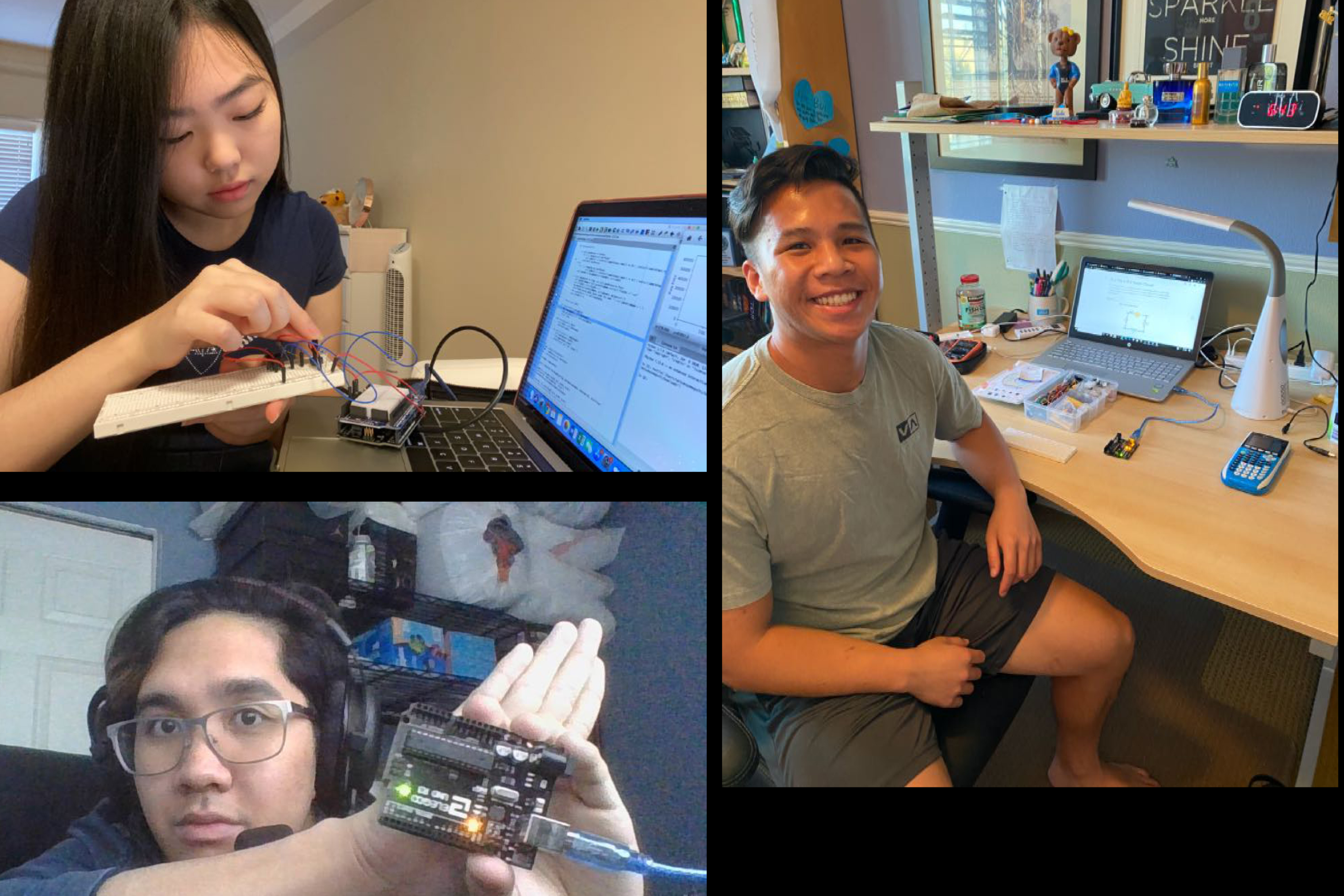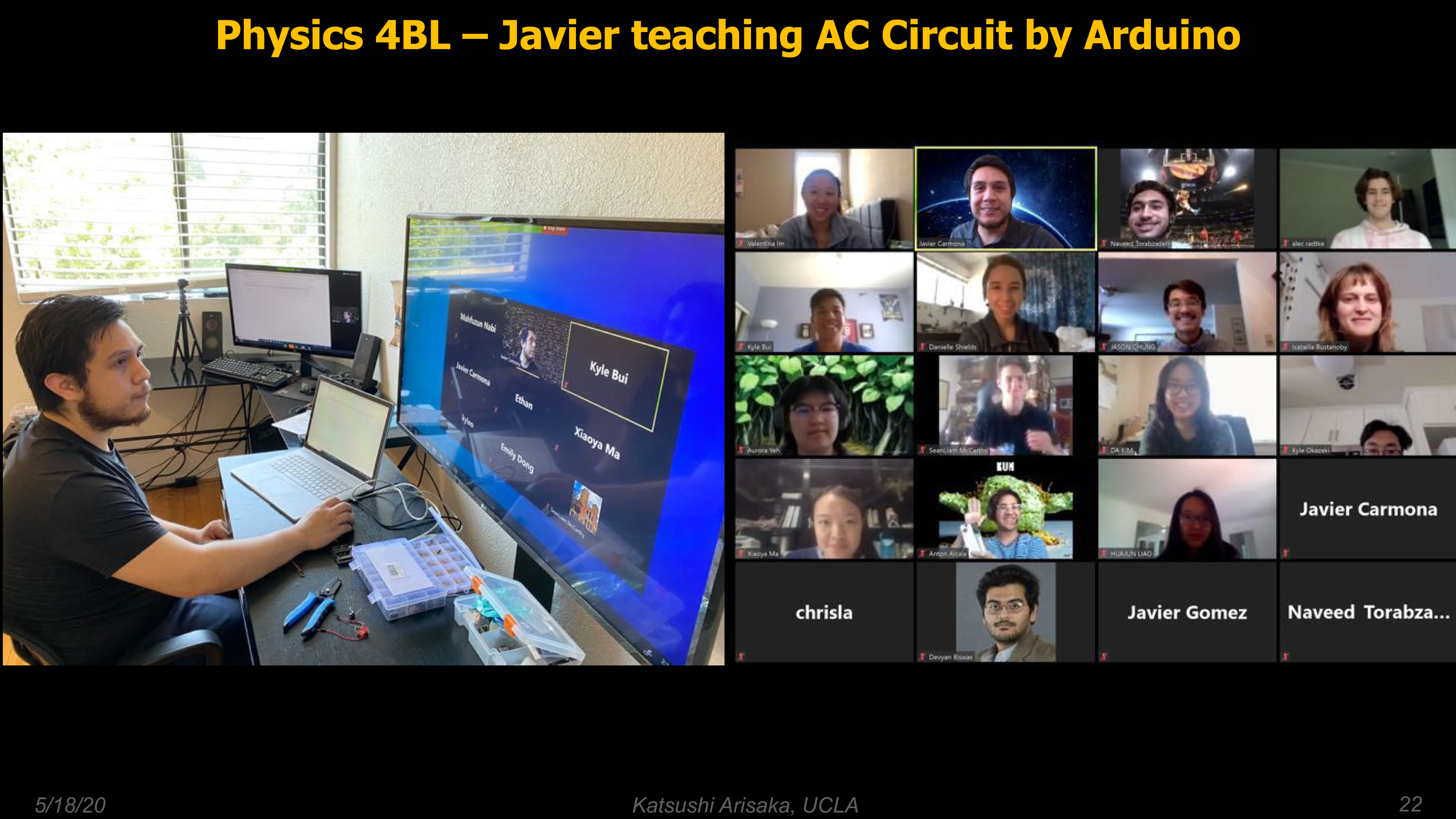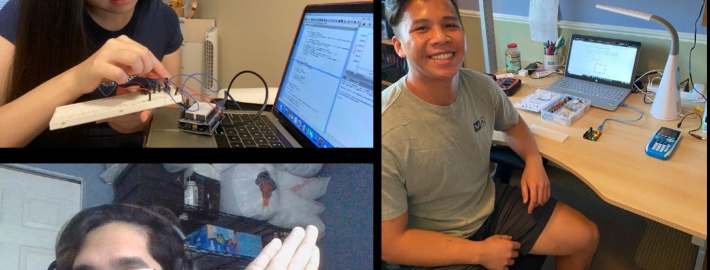Instructors’ foresight leads to remote learning success for physics labs

Thanks to off-the-shelf kits, UCLA students studying physics could do their lab work in their homes and design their own experiments. (Photo Courtesy of Katsushi Arisaka)
When UCLA announced on March 10 that the final weeks of winter quarter — and later the entire spring quarter — would be taught remotely because of COVID-19, it immediately tested everyone on campus, but in particular students and faculty who had to figure out on the fly new ways to learn and teach.
Adapting was understandably easier for some classes, like introductory courses which could more simply turn a live lecture in a big hall into a video lecture delivered through Zoom. But what about classes built around in-person group work, or the performing arts, or science and engineering labs that require the use of equipment and materials for hands-on learning?
Fortunately for the students taking the Physics 5AL/5BL/5CL series (physics for life sciences majors) or the Physics 4AL/4BL series (physics for scientists and engineers), their professors and teaching assistants in the UCLA Department of Physics and Astronomy were uniquely prepared for this forced period of remote instruction.
For the past few years, the department has explored ways to improve engagement for the 3,000-plus students who take these classes each year by making the labs for these courses more student-oriented. The transition to remote learning made figuring out the best ways to do that more urgent than ever, and the department’s head start on adapting the class to better fit students’ needs helped make the transition much easier.
“The key to giving a satisfying experience to students working remotely is to offer real-time solutions as quick as possible,” said Katsushi Arisaka, professor of physics and astronomy in the UCLA College and also of electrical and computer engineering in the Samueli School of Engineering, who emphasized how much of a team effort this has been. “That’s why we need such a good group of TAs behind the scenes.”
For Arisaka, restructuring these classes has always been about finding new ways to prepare students for future success. He has worked with teaching assistants Javier Carmona, Shashank Gowda, Erik Kramer, Grant Mitts, Pauline Arriaga and many others, to find ways to give students more control over the labs, while introducing them to concepts and skills, such as writing computer code.
To make these lab classes work from home, students needed access to the right tools, which also meant affordable equipment, such as the Arduino UNO Starter kit for Physics 4AL and 4BL and the Snap Circuit Kit for Physics 5CL, which Arisaka and his teaching assistants have been using for a couple of years.
Arduino and Snap Circuit kits provide dozens of basic hardware components that allow those without backgrounds in electronics and programming to create low-cost scientific instruments, to prove chemistry and physics principles, or to get started with programming and robotics. Students have been able purchase these kits online or the UCLA Store and their wide availability has also made the transition easier.
Students were grouped to work together remotely via Zoom breakout rooms from day one. The highlight of the course was to conduct their group final projects during the last three weeks and present the results by Zoom video-recording. It seems the only limit to students’ projects was their imagination.
Projects included: comparing human versus automated coin flips; measuring the effect of music on human reaction time; observing the energy lost by a bouncing ball; predicting the trajectory of basketball shots; comparing use of force across five sports; studying how the shape of a rolling object affects its acceleration as it rolls down an inclined surface and comparing the observations with physics theory.
“Students seem to be enjoying it, and as TAs we enjoy their creativity,” said Gowda, graduate student researcher in UCLA’s Smart Grid Energy Research Center, who noted that these types of ideas will improve student learning even once in-person instruction resumes. “They develop experiments and projects that we wouldn’t even think of.”
While previous versions of the class covered the necessary material, said Kramer, their structure seemed antiquated. “The move to this more modern hardware platform, using the coding language Python, and Arduino, has really inspired students to do amazing final projects,” he said.
According to Carmona, the way these labs were previously run just didn’t capture the imagination of students as much as they should. Speaking on the transition, he says it was a difficult task, but one that was well worth the effort.

Teaching assistant Javier Carmona, left, leads a Zoom class on how to use the Arduino kits. (Photo Courtesy of Katsushi Arisaka)
“It required a lot of work to get to where it’s at, but I’m glad we put in the work because now we have hundreds of students who didn’t miss out on a hands-on laboratory they could do at home,” Carmona said.
To make the hands-on, labs-at-home work the instructors “flipped” the class, encouraging students to design and test their own experiments rather than making them follow strict guidelines from teaching assistants and professors. Abandoning the old ways for physics labs proved positive according to student responses.
Among the comments from students provided as part of the course feedback: “You all are doing great, by far the most fun class I have this quarter, thank you for all the effort you guys have been putting into this, I figure it’s got to be really hard putting together a remote lab, but you guys are doing a pretty dang good job :)”
“We are learning marketable skills with Arduino and Python and the course development team is very receptive to feedback and constantly tries to make the class better. Thank you!”
Another change that the group is proud of is asynchronous operation — which allows students to learn at their own pace. This switch has given students flexibility to work at a rate they feel comfortable with, a change that can be beneficial for students who may be struggling with the material.
“The videos demonstrating how to use python and how to set up experiments have been extremely helpful, especially to someone like myself who has no experience with this as I’ve not taken 4AL,” wrote another student.
At the same time, Arisaka said, letting students work at the own pace also allows students who really understand the material to finish their work faster, and he encourages them to go back and help their peers.
Arisaka, who has been teaching physics for more than 30 years, also said it’s time to move away from the notion that students should be competing with one another for grades.
“They can boost their grade if they do better, it has nothing to do with the student next to them, and this message is very important so they can learn something useful,” said Arisaka, who noted that students’ mastery of skills was better than ever this quarter, even though labs were conducted at home.
These changes to the lab structure were possible thanks, in part, to funding and support provided from the UCLA Center for the Advancement of Teaching. “That transition to students having ownership of the experiment is the kind of high-level learning experience that we seek for UCLA students, so we were happy to support that work,” said Adrienne Lavine, associate vice provost for the UCLA Center for the Advancement of Teaching and a professor of mechanical engineering.
For Lavine, the move to remote instruction has created an opportunity for faculty to reflect on their teaching and how that affects student learning. “I think there’s a lot of faculty out there who are doing an incredible job of being thoughtful in how to handle this, and they will learn lessons that can be taken back into in-person instruction,” she said.
This article originally appeared in the UCLA Newsroom.




